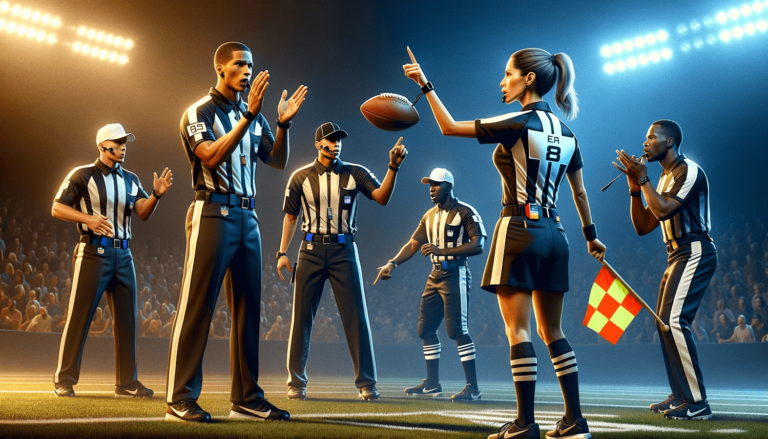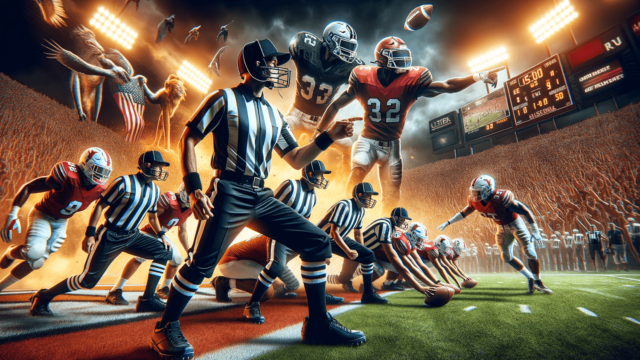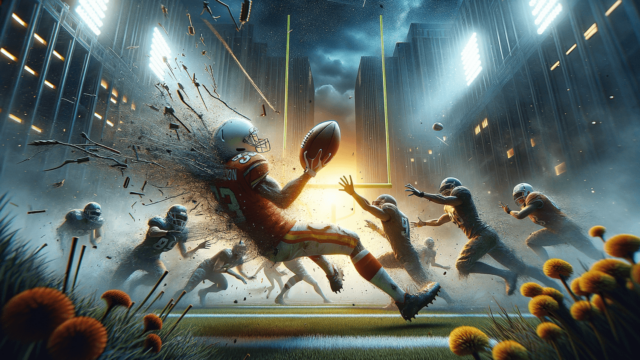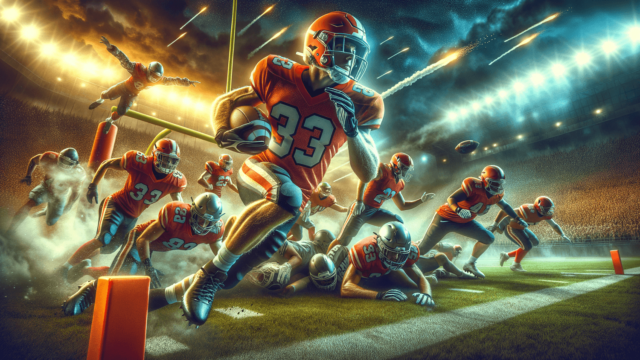
Referees in football communicate through a combination of verbal and nonverbal methods, including hand signals, whistle blowing, and electronic devices like radios and earpieces. They use these tools to coordinate with assistant referees and other match officials, convey decisions to players and coaches, and ensure a smooth flow of the game.
Verbal Communication
Referees use verbal communication to direct players, provide instructions, and explain decisions made during the game. They also use verbal cues to collaborate with their team of assistant referees, fourth officials, and VAR (Video Assistant Referee) when needed.
Nonverbal Communication
Nonverbal communication plays a crucial role in referees’ interactions during football matches. Hand signals and body language convey essential information that keeps the game running smoothly.
Hand Signals
Referees use various hand signals to indicate decisions like fouls, offside, corner kicks, and substitutions. Some examples of hand signals include pointing to the penalty spot for a penalty kick, raising a clenched fist for an indirect free-kick, or holding the flag horizontally for an offside call.
Whistle Blowing
A referee’s whistle serves as a universal tool to control the game. Its usage represents the start and end of the game, stoppages for fouls, and resumptions of play. Referees use varying whistle tones and durations to signal different events in the match.
Electronic Devices for Communication
Football referees employ electronic devices to improve communication and collaboration with match officials. Two primary devices used are radios and earpieces.
Radios
Radios facilitate real-time communication between the referee, assistant referees, and the fourth official. This continuous link helps maintain a high level of coordination, prompt decision-making, and efficient execution of officiating responsibilities.
Earpieces
Earpieces enable referees to receive critique, suggestions, or pertinent information from the VAR team during the game. They promote harmonized decision-making and ensure that any necessary adjustments or corrections can be made swiftly and effectively.
Assistant Referees and Their Signals
Assistant referees, positioned along the touchlines, help the central referee by signaling offside, throw-ins, corner kicks, or goal kicks. They use a flag to communicate essential decisions visually. For example, they raise the flag vertically to signal offside or point it towards the field’s corner for a corner kick.
Fourth Official’s Role
The fourth official, located between the team benches, manages substitutes, tracks additional time, and mediates between the technical staff and the refereeing team. They use a substitution board to signal additional time and substitutions, ensuring a smooth flow of information and fostering an environment of transparency.
VAR System in Modern Football
The Video Assistant Referee (VAR) is an advanced technology system used in determining crucial decisions like goals, penalties, red cards, and cases of mistaken identity. The VAR team, situated in a separate location, provides advice and critical insights to the central referee, who can review the footage on a sideline monitor. This communication improves decision-making accuracy and ensures fairer outcomes in football matches.
Understanding Referee Signals for Spectators
Referee signals can sometimes be challenging for spectators to interpret. Learning the basic signals, such as the ones for fouls, throw-ins, goal kicks, and corner kicks, can enhance fans’ understanding and enjoyment of the game. Familiarity with these signals helps build a deeper appreciation for the intricacies of football and its officiating.
FAQ Section
Here are some frequently asked questions and their answers, which readers might find helpful to deepen their understanding of the referee’s communication methods in football.
What is the advantage of using radios and earpieces for communication in football matches?
Using radios and earpieces allows the referee, assistant referees, fourth official, and VAR team to communicate in real-time, making collaboration more efficient and effective. This is vital in ensuring prompt decisions and minimizing errors, leading to a smoother, fairer game.
How has the VAR system changed the communication between referees?
The VAR system has enhanced the communication between referees by providing additional insights and information, enabling better-informed decisions. This technology has reduced the possibility of human error and improved the overall game experience for players, coaches, and fans.
Are there any unique hand signals used by referees in different football leagues?
While most hand signals used by referees are universal across various football leagues and competitions, there might be slight variations or additional signals specific to certain leagues. However, the majority of signals remain consistent to ensure a standard and familiar communication method for players, coaches, and fans globally.
Can players, coaches, or fans face consequences for not understanding referee signals?
Players and coaches are responsible for understanding referee signals, as these directly impact gameplay and decision-making. Misunderstanding a referee’s signal can lead to tactical errors, penalties, or evendisciplinary actions. While fans do not face direct consequences, better comprehension of referee signals can enhance their appreciation and enjoyment of football matches.
Do referees undergo specialized training in communication?
Yes, referees must undergo specialized training in communication as part of their overall referee education. This training covers verbal and nonverbal communication tools, as well as the use of technology such as radios and earpieces. It ensures that referees possess the necessary skills to collaborate effectively and manage games professionally.
Featured Posts
- No pillar pages found.





